Carmina Burana
Music by
Carl Orff
Soloists
| Soprano | Lisette Oropesa | |
| Tenor | Christopher Pfund | |
| Baritone | Ljubomir Puskaric | |
| Bass | Raymond Aceto |
Robert Porco
About
About Carmina Burana
Orff composed Carmina Burana in 1935-36. The work was premiered on June 8, 1937, in a staged performance (with sets and costumes) at the Frankfurt Opera, conducted by Bertil Wetzelberger. The first performance in the United States took place on January 10, 1954, in San Francisco.
Carmina Burana runs about one hour in performance. Orff scored it for an orchestra of 3 flutes (second and third doubling piccolo), 3 oboes (third doubling english horn), 3 clarinets (third doubling piccolo clarinet in E-flat), bass clarinet, 2 bassoons, contrabassoon, 4 horns, 3 trumpets, 3 trombones, tuba, timpani, percussion (3 glockenspiels, xylophone, castanets, ratchet, jingles, 2 antique cymbals, 4 cymbals, tam-tam, 3 bells, tubular bells, tambourine, 2 side drums, bass drum), 2 pianos, celesta and strings, plus soprano, tenor and baritone soloists, children’s chorus and mixed chorus.
The Cleveland Orchestra first performed Carmina Burana at the inaugural Blossom Festival in August 1968, under the direction of Louis Lane, with the Blossom Festival Chorus and Children’s Chorus, and guest soloists. The Orchestra recorded Carmina Burana in 1974 under the direction of guest conductor Michael Tilson Thomas, with the Cleveland Orchestra Chorus, Boys’ Chorus, and soloists Judith Blegen, Kenneth Riegel, and Peter Binder.
Performance History
Lisette has given 125 performances as Soprano.
2026
Salzburger Festspiele
Swiss Made Culture2025
Opera Louisiane
Festspielhaus Baden Baden
NBS Japan Performing Arts Foundation
Opéra National de Paris
Staatsoper Hamburg
Teatro di San Carlo2024
ABAO Opera Bilbao
Grand Théâtre de Genève
Carnegie Hall
Théâtre des Champs Elysées
Festival Cap Rocat
Metropolitan Opera
Metropolitan Opera
Metropolitan Opera
Carnegie Hall
Musikverein Graz
Teatro alla Scala
Royal Opera House
Hungarian State Opera
Festspielhaus Baden Baden
Gran Theatre del Liceu
Teatro alla Scala
Théâtre des Champs Elysées
Gstaad New Year Music Festival2023
New Orleans Opera
Clarksville Community Concert Association
Lyric Opera of Chicago
Guild Hall
Pro Música Águilas
Savonlinna Opera Festival
Carnegie Hall
Stiftung Mozarteum Salzburg2022
NBS Japan Performing Arts Foundation
Arena di Verona
Teatro Real
Wiener Staatsoper
Les Arts2021
Ravello Festival
Teatro de la Maestranza
Teatro de la Zarzuela
Teatro Regio di Parma
Nachtigall Artists
BellininFest
Festival Della Valle D'itria
Napa Valley Festival
Accademia Nazionale di Santa Cecilia
ABAO Opera Bilbao2020
Teatro alla Scala
Royal Opera House
Arena di Verona
Teatro del Maggio Musicale Fiorentino
Metropolitan Opera
Metropolitan Opera
Hamlen-Palm Series
Gstaad New Year Music Festival2019
New Orleans Friends of Music
Richard Tucker Music Foundation
Grandes Vozes
LSU Opera
The Maestro Foundation2018
Rossini Opera Festival
Tucson Desert Song Festival2017
Deutsche Oper Berlin
Musique et Vin
Vocal Arts DC2016
Chamber Music Society of Lincoln Center
Dallas Symphony Orchestra
Classical Tahoe
Bayerische Staatsoper
Cincinnati Symphony Orchestra
Baton Rouge Symphony Orchestra
Strasbourg Philharmonic
Philadelphia Orchestra
Baltimore Symphony Orchestra
Accademia Nazionale di Santa Cecilia
Park Avenue Armory2015
Skaneateles Festival
Houston Symphony
Chicago Bach Project2014
Credo Chamber Music
Chicago Bach Project
New Choral Society2013
Pittsburgh Symphony
LSU Opera
The Opera San Antonio
Arizona Opera2012
Mostly Mozart
Musique et Vin
Pittsburgh Chamber Music Society
George London Foundation
Chicago Symphony Orchestra2011
New Choral Society2010
Richard Tucker Music Foundation2009
Metropolitan Opera2008
Metropolitan Opera
Houston Symphony2005
Metropolitan Opera

